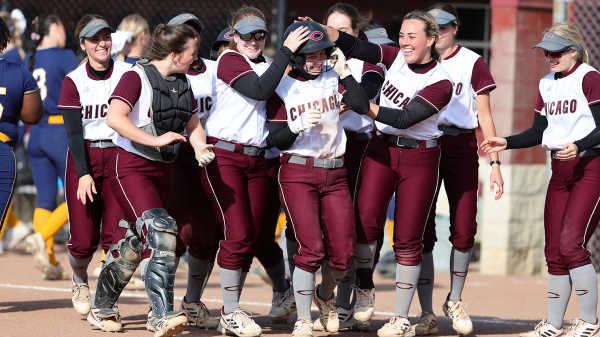How athletic trainers impact NCAA programs

The GIST: Few athletic department employees do more to keep athletes safe and healthy than athletic trainers. In an exclusive interview with The GIST, UChicago’s Rachael Hewson Grotts, who earned her M.S. in Post-Professional Athletic Training at a DI school before her current DIII stint, spoke about how a school’s resources directly affect players’ lives.
How it works: Grotts is one of four athletic trainers under the Director of Sports Medicine at UChicago. Each trainer is in charge of three teams, and they collaborate and trade off as needed on the rest to ensure all the Maroons’ 18 sports are covered. That’s a whole lot of athletes — and they’re doing a helluva lot more than taping ankles.
- Contrary to popular belief, the trainers don’t just provide immediate injury care on the sidelines — they manage injured athletes’ long-term rehab, working diligently for months to get them back in the game.
- Grotts spends 70% of her time on direct patient care, and the other 30% on rehab planning and goal assessment, keeping up with new research, and other admin. What she really loves, though, is how rewarding it is to watch players develop and heal.
The challenges: Athletes grind at all hours of the day, which means trainers do, too. As Grotts put it, “if they’re there, we’re there,” for early-morning practices, late-night matchups, and road games. Add in that extra 30% of admin work, and trainers have long and often inconvenient hours — and working for a smaller school adds even more stress.
- DIII schools have fewer resources than larger, wealthier programs. For one, smaller and/or fewer athletic facilities mean awkward practice times, which can affect athlete recovery.
- Grotts also said UChicago has only two strength and conditioning coaches and no dieticians. Plus, with only five trainers, her sports med team is spread thin, affecting her work-life balance.
Zooming out: These are just some of the amenities that widen the divide between the NCAA’s richest programs and everyone else. Despite the challenges, Grotts knows her training team is crucial to players’ success on and off the field, and she says there’s nothing better than seeing her athletes step back into the game.
Enjoying this article? Want more?

Sign up for The GIST and receive the latest sports news straight to your inbox three times a week.

